
views
Locating Squeaks
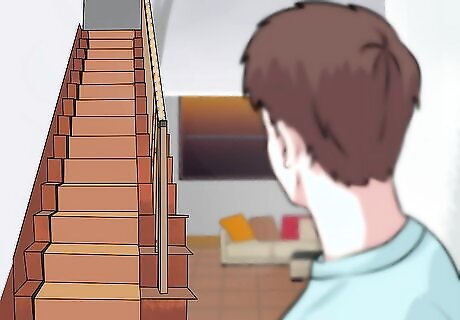
Know your stairs. Expect them to consist of three main parts: treads, risers, and stringers. A tread is the horizontal piece of wood that you actually step on. A riser is the vertical piece of wood rising from the back of each tread. Stringers are the framework that your treads and risers rest on. Expect your staircase to have at least three stringers: one on each side of your staircase, plus one running down its middle. Very wide stairs may have additional stringers for extra support.
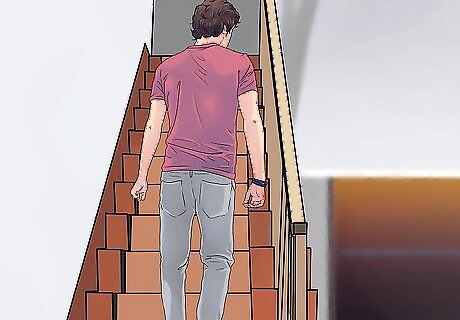
Find the squeak. Walk up and down the stairs. When a stair squeaks, test the whole tread by stepping along each part of it, from front to back and side to side. Determine exactly where the squeak is originating from. Expect it to be caused by a gap that is beginning to grow between the stairs’ parts at that precise spot. This gap allows the stair to grow loose, so that one part rubs against another and/or the nails or screws holding them together. If you don’t have access to the underside of your stairs, locating the riser by sight is easy, but finding the stringers requires your ear. Gently tap the tread with a hammer. When one area sounds duller than the rest, this indicates a stringer running below. Expect each stringer to be about 1.5 to 2 inches thick (3.8 to 5.1 cm).
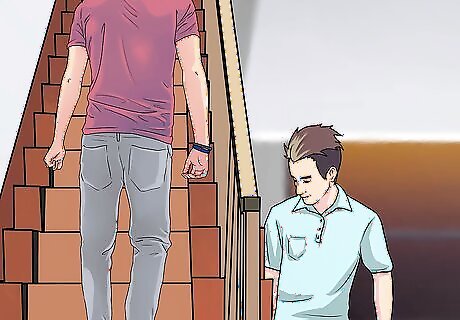
Have a partner. If you have access to the underbelly of your stairs, have them find the squeak by walking up and down the stairs. Stand under the stairs so you can see and/or hear when a step moves and squeaks. Save yourself some time instead of running up and down the stairs to repair each squeak as you find them.
Silencing Squeaky Stairs from Underneath

Stick a shim into tiny gaps. When your partner steps on a tread and causes a squeak, look for a gap between the tread and riser or the tread and stringer. If you see a small one, worm a shim’s thinner edge in between the two parts. Use a hammer to gently tap the thicker end until the shim is firmly in place. Be careful to insert the shim only far enough to fill the existing gap. Avoid driving it in to the point that the thicker end begins to separate the stairs’ parts even more. For extra security, apply carpenter glue to both sides of the shim before inserting. A shim may also be referred to as a wedge.
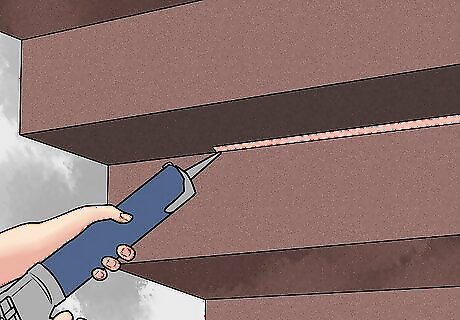
Use construction adhesive for long gaps. If you the gap under the step is very long, use polyurethane construction adhesive to fill the space and glue down the tread. This is a very strong construction adhesive, and unlike carpenter glue, it fills gaps and becomes hard enough to walk on. Apply the construction adhesive with a caulking gun, as it is a very wide bead. Press it in with your finger, leaving a wide bead sticking to both surfaces. Place a heavy object on top of the step while the glue dries.
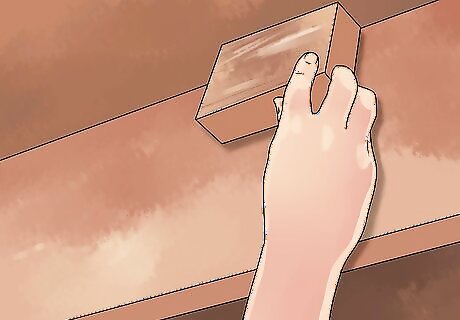
Support the tread with extra wood. If the stringer or riser has lost its original shape due to wear-and-tear or warping, give the tread a fresher piece of wood to rest on. Cut a wooden board to the length needed. Use carpenter glue or construction adhesive to line the side that will make contact with the tread. Place the board flat against the stringer or riser, with the top pressed flush against the tread. Then nail or screw the board into the stringer or riser. This method is only meant to eliminate gaps caused by slight warping or wear-and-tear, not to reinforce the strength of weak stairs.
Quieting Your Stairs from Above
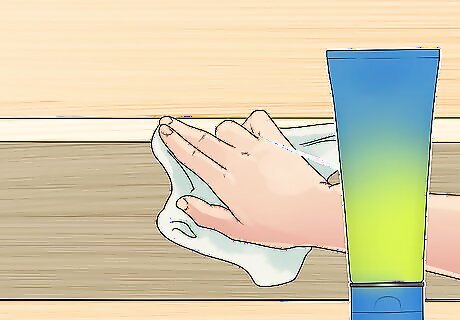
Apply lubricant between boards. If each step to your stair is made of more than one wooden board, the squeak may be caused by those two pieces rubbing against each other. In this case, pour lubricant in between them. With a clean cloth, use your foot or hand to rub the lube further in. Suitable lubricants for this method include: powdered graphite, powdered soapstone, and talcum powder.
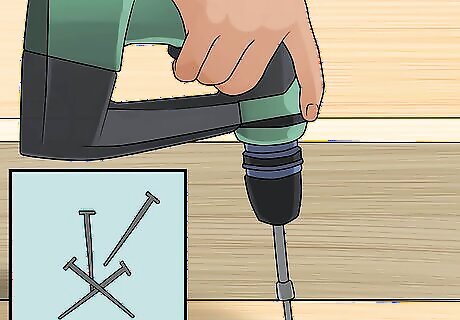
Use nails to tighten gaps. Place a heavy object on either side of the area that squeaks so the tread makes contact with the stringer or riser below. Hammer 3 in (7.6 cm) finishing nails through the tread or riser into the stringer. To ensure that it remains flush over time, hammer the nails in at around 60 degrees, with the sharp end of each one pointed toward the other. First, mark two spots on the tread, along the stringer or riser underneath, to drill starter-holes for your nails. Make sure these spots are separated by a wide enough margin so that the nails don’t intersect. Using a drill-bit with a smaller diameter than your nails, use a drill to create a shallow starter-hole for the tip of each nail. Hammer the nails in until their heads are slightly lower the tread’s surface. Use wood putty that matches your stairs to cover the nail heads and fill in the dents.
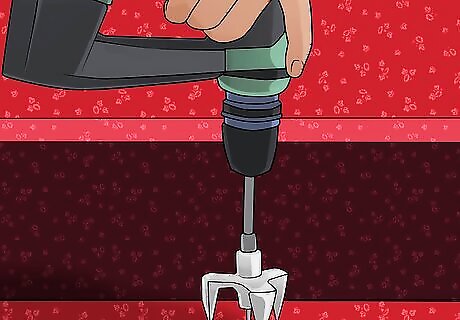
Buy a kit to deal with carpeted stairs. Ideally, time your house projects so that you can repair squeaky stairs while replacing carpet. If this isn’t possible, find a kit for screwing through carpeting. Such kits come with screws, drill bits, and a tripod device specially designed for this task. Set the tripod on the tread where it needs to be screwed to the stringer or riser underneath. Place one of the scored screws into the hole at the tripod’s center. Drill the screw through the center of the hole, through the carpet and tread, into the stringer or riser. Pick the tripod up and find the screw head sticking out of the carpet. Use the tripod’s screw gripper to break off the specially designed screw head, in the same manner you’d remove a bottle cap with a bottle opener.













Comments
0 comment